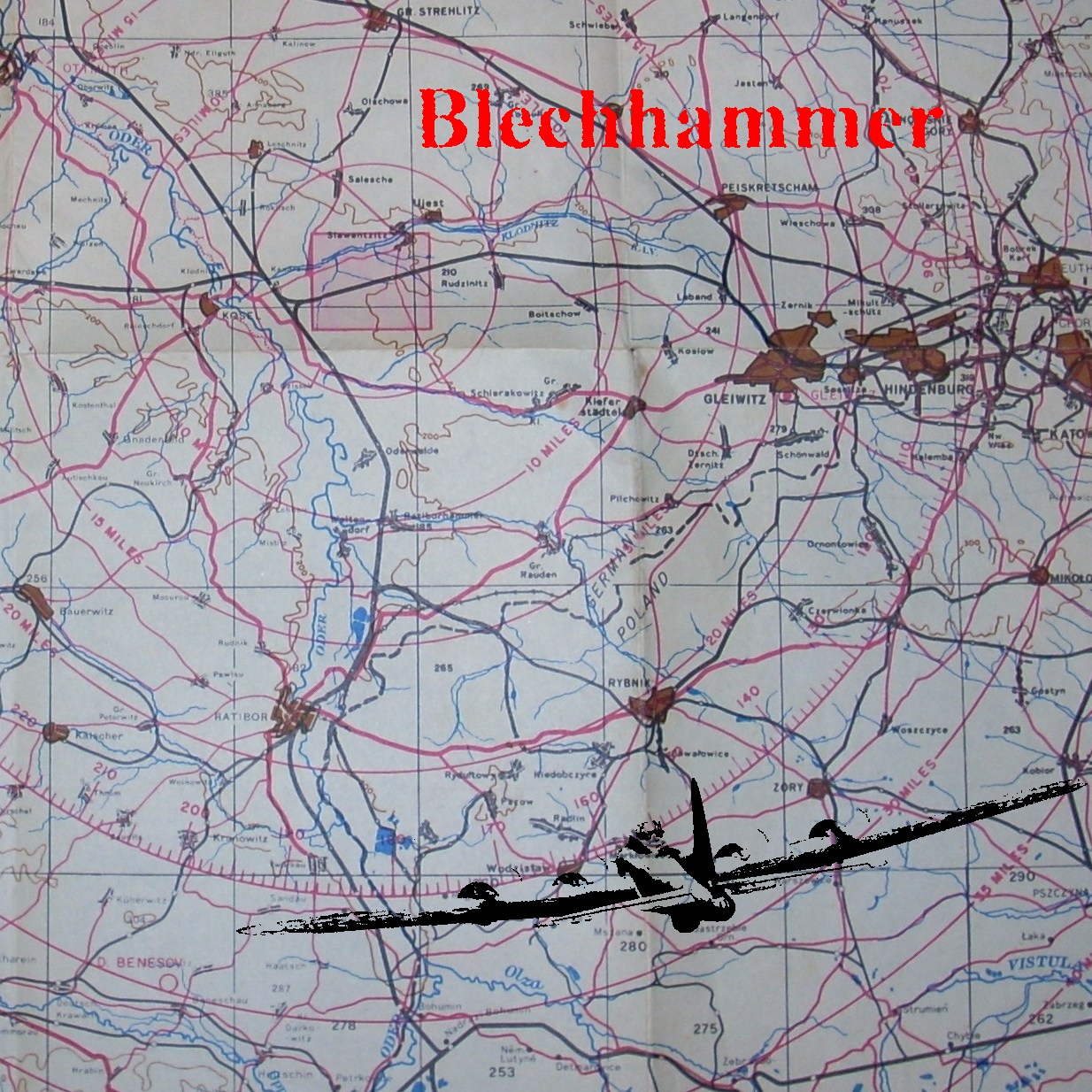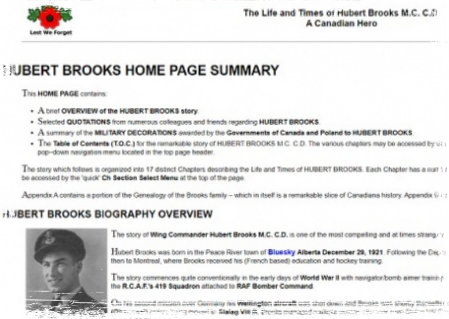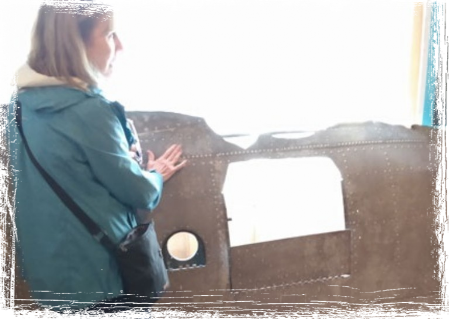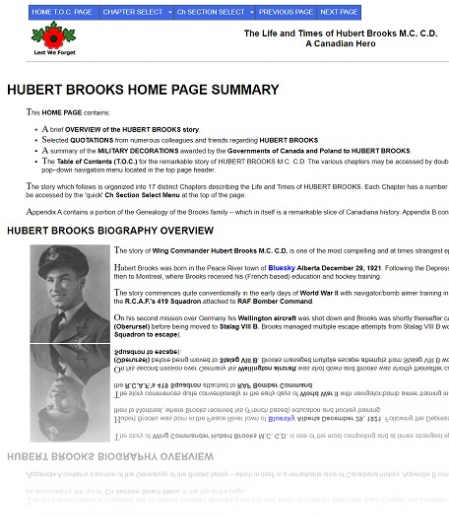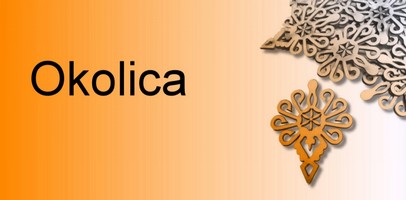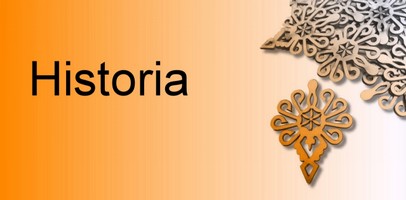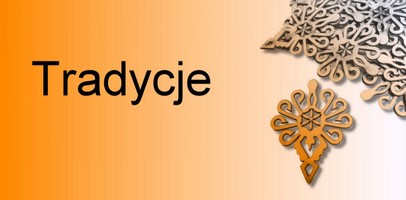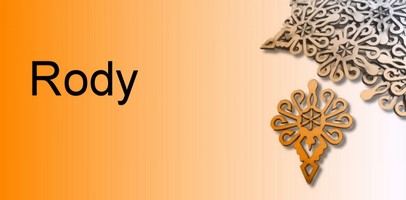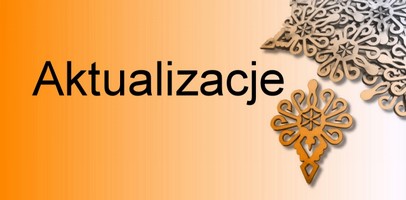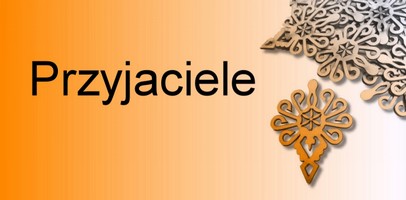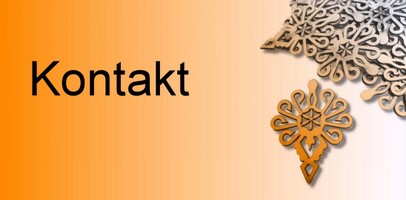Witryny
Historia - rozdziały > Wrzesień 1944 - rozdziały
Witryny internetowe
hubertbrooks.com
wind-works.org
hubertbrooks.com
The Life and Times of Hubert Brooks M.C. C.D.
A Canadian Hero
Ralf Brooks
Evading US Airmen Hansler, Kroschewsky, Suhling, Stock, and Beam reach Polish AK Partisans
German Blechhammer North Oil Refinery
The first American evaders we were to see was the B17G airmen downed as a result of an air attack on the Blechhammer North Oil Refinery.
Author Boguslaw Zieba in Book Blechhammer by Publisher: Dorota Silaj Publishing (November 15, 2009)
This brief background section explains the importance of this Allied target.
The biggest oil refinery, Ploesti in Rumania, was completely annihilated by the Allies in August 1944. Oberschlesische Hydriewerke A.G. works in Blechhammer (a.k.a. Blechhammer North Oil Refinery) was situated south-east of Kosel (Kozle) and crucially manufactured synthetic fuel for the German war effort. First Allied bombing missions against Blechhammer stated July of 1944 and combat bombing missions continued until January 1945 with the final destruction of the factory.
In September 1944, the Blechhammer North Oil Refinery still produced 5,000 tons/month -crucial to the Germans front line oil needs. Following August 1944, the Blechhammer North Oil Refinery became the highest priority target in the WW II theatre.
Downed B17G (44-6412)
On Wednesday September 13, 1944 the 817th Bomber Squadron of the 483rd Bomber Group which was part of 15th Air Force Command based at Sterparaone Italy (just north west from Foggia) initiated a combat bombing mission of the Blechhammer North Oil Refinery, the then highest priority target in the WW II theatre.
One of the aircraft involved in this bombing mission was Pilot 2nd Lt. Everette J. "Robbie" Robson's B17G-50-DL (SN 44-6412) also called "Flying Fortress" - the name chosen because of the large number (12) of 50mm machine guns it carried.
Robbie had basically the same crew as per the last 20+ missions with the exception of 2nd Lt. Gus Kroschewsky who was flying with the group for the first time as was S/Sgt Harold Beam and co-pilot Harold Stock who re-joined the crew and now was flying for the fourth time with the group.
On this flight Robson's plane was to carry a bomb load of 4,000 pounds of RDX and was to fly lead ship in the bottom echelon of a tight, staggered formation of seven B17s in a total strike force of more than 28 B17s.
The sky was booming with ant-aircraft fire. Flak was rattling against the planes skin. With the target Blechhammer synthetic oil refinery in sight, the bomb hatch opens and the payload falls.
Shortly after dropping the bomb payload at a height of 28,000 feet, the aircraft was rocked by a huge blast.
The crew figured that either anti-aircraft fire had hit one of the bombs as they fell or another bomber had slipped below them and flown into the falling payload (turned out not to be the case as all other B17s on this mission returned to base safely).
As a result of the blast, fire temporarily swept the fuselage before being quickly put out; the plane's plexiglass nose had been blown off, and blast induced splinters caused significant damage on board as well as riddling its wings and fuselage with holes, and crucially disabling two of the four engines (No 1 and No 4).
The blast also severely wounded 2nd Lieutenant Gus Kroschewsky around the eye and other parts of his body and for a moment he lost consciousness.
The crippled bomber dropped out of formation and some 40 minutes later was down to oxygen level at 12,000 feet where it was quickly pounced on by three German Messerschmitt Me-109 fighters. This was the final blow and with the plane loosing altitude rapidly and with the Carpathian Mountains in view, Robson gave the bail out alert. (Gus Kroschewsky was able to take out one of the three fighters with his chin turret guns for which he was later awarded a Silver Star.)
As the plane passed the Babia Gora Peak at 4,000 feet, each of the crew attach their chest parachute and get ready to jump for the first time in their young lives.
Hansler was out first followed immediately by Kroschewsky, Sternbeck, Beam and Suhling. The rest of the crew were delayed a little from continuing to bail out as Bill Barry the rear tail gunner had not heard the bail out order and Stock went back to get him and the aircraft had at that time unexpectedly changed direction causing some further delay.
The disabled B17G ended up crashing near Koniówka (co-ordinates 49 deg 23'33"N, 19deg 47'56"E) in southern Poland - near the Polish-Slovak border.
Locals tried to get close to the crash site but constant bursts of ammunition kept them a safe distance away. Later the Germans came to guard the plane wreck and the civilians were warned off.
Editor's Note:
Brooks Notebook entries are faded and believed to be:
1 Hansler, R.L. 2nd Lt. 0.722848
2 Kroschewsky, G. " 0.1795526
3 Sternbeck, G.W. S/Sgt 36826944
4 Beam, H.E. " 336377873
5 Suhling A.C. Sgt 36482329
6 Dejewski, T.A. 2nd Lt. 0.2064229
7 Felt, S.P. 2nd Lt. 0.2059017
8 Nelson, R.T. F/O T.122067
9 Sich, E. J. Cpl 39568564
10 Racine, B.C. " 11098611
11 Venable, W.B. " 14185196
12 Blehar, J.F. Pfc. 12238645
13 McCuttie, W.J. Cpl. 12228486
14 Dallas, C.A. " 19124917
15 Curtis, B.J. Rf. 11721
16 Slosse, F. Sgt. 30856
17 Duncan, J. Sgt. 2873963
Sgt. F. Slosse is believed to be the Belgian POW escapee referenced in a number of historical accounts.
Story of B17G (44-6412) airmen evasion in Poland
Wednesday September 13, 1944
All the crew were to land roughly in the area bounded by the towns of Jablonka to Piekielnik Slovakia.
(These towns had been part of Poland prior to WW 2 but the Germans had turned this area over to Slovakia during the war, and then after WW 2 the area reverted to Poland!)
Sternbeck landed safely but unfortunately Kroschewsky broke his leg on landing impact due to a very quick descent because of a damaged (holely) parachute created by the plexiglass splinters from the explosion over Blechhammer.
(While parachuting (quickly) to earth, Kroschewsky had spotted the German Me-109 fighter he'd shot down. With some foresight, Kroschewsky managed to get Sternbeck to go to the wreckage and hack off a small portion of the fuselage and obtained the dead pilot's (Captain Wilhelm Ekhardt)) papers so that he could later validate his kill!)
Hansler hit the ground about 100 yards from 3 farmer's houses about 3 miles south of Jablonka Slovakia. He quickly made contact with a Slovak partisan Karol Zachora-Bulawski who gave him shelter and civilian clothes. Shortly he was brought to meet up with Sternbeck and Kroschewsky.
Beam landed near the village of Piekielnik Slovakia and hurt his head and foot by colliding into a wooden fence around a farm house. He was then brought to meet up with Sternbeck, Hansler and Kroschewsky.
Suhling jumps and is knocked head-over-heels by the B17G's slipstream. He maneuvers in mid-air to a headsup position and lands in a field close to the Slovak-Polish border. Friendly locals help him ditch his chute and airman's gear. But he suspects the worse when those helping him scatter. Six German soldiers slowly approach. They are spaced 40 feet apart and methodically walk the field where he is hiding. The Germans suddenly move towards a ravine thick with brush away from him. They leave the area, he is safe. By late afternoon after remaining on his belly for 3 hours a partisan villager from Piekielnik spots him and eventually brought him to meet up with Beam, Sternbeck and Kroschewsky.
Stock and Barry were almost immediately captured by the Germans upon landing. They got to witness the German soldiers fighting over their parachutes - as the Germans wanted to take the silk home for their wives' underwear!! Van Oostrom and Nance landed close to Barry's site but managed to initially hide out in a peat bog. Within 12 hours they too were captured by the Germans.
(Stock was caught on Sep 13, 1944 and found himself through Dulag Luft in Stalag Luft I in Barth where he met only one time (around Christmas) his commander Robson.)
(Van Oostrom would be a POW in Stalag Luft IV from September 1944 till April 1945.)
Robson, the last man out of the plane, had bailed out at about 1,000 feet landed along the Czarny Dunajec River between Koniowaka and Chocholow. Robson lingered in the area for 3 days until he was able to visit the crash site and document the damage. Rembering the pre-flight briefing direction to not head towards the Russian line if shot down, Robson then headed east towards Ciche but was captured by the Germans on September 27 and subsequently brought to Dulag Luft and then on to Stalag Luft I, North II, Barracks 4, Room 5 were he waited out the war. (Robson would later claim this direction to not head toward the Russian front line was a mistake.)
For safety (as there were a lot of pro-German Slovaks in the area at the time), about a day later, the Slovak partisans, after a 3 hour march in the dead of night, brought Suhling, Beam, Sternbeck and Hansler across the Polish border.
Kroschewsky remained behind in the house of Antonieg Balcerzak in Jablonka Slovakia for a little less than 1 month recuperating from the broken leg.
Editor's Note:
The description of this journey from Slovakia to the partisans in southern Poland is described quite vividly in the excellent book Blechhammer by Boguslaw Zieba Ref 3.27 a summary of which follows.
Just across the border they were handed over to a Polish partisan guide who brought them, by the back trails, via the north side of Nowy Targ to the partisans in the Gorce Mountains.
They followed the route of Jablonka to a forest cottage next to Raba Wyzna . There they were joined by 4 men from Major Stobrawa's team: Harnas, Longin, Szejk and Szczupak and along with Orava (then Slovakia) natives. Andrzej Wojdyla and 1st Lt. Andrzej Jazowski led the Americans on a trail heading for Zeleznica Hill, then along to Sieniawa Village to another forest cottage in a place called Buflak. The place was an outpost for the partisan headquarters on the next hill, and the squad consisted of about 40 fighters.
Next morning, Mieczyslaw Batkiewicz led them to a shelter at the edge of a clearing called Stare Wierchy then near day's end came out of the forest and there in the valley lay the city of Nowy Targ. At sundown they entered the city and had dinner at a partisan's house. After an hour or two they continued their journey with another night hike through the hills and forests reaching after an hour and a half a beautiful isolated house deep in the forest. The woman of the house was a gracious old lady who spoke some German and who seemed quite refined. They stayed in this house for the night. In the morning they met a partisan officer who had come to take them to the headquarters of the partisans - a camp with two to three hundred soldiers. That morning they went back down into the valley passing Obidowa until they reached a stream flowing by them on the left and then climbing for an hour up a hill they arrived around noon at a small farm house where they would meet the partisan leader before being brought to the partisan mountain headquarters.
At the farm house the B17G Americans (Suhling, Beam, Sternbeck and Hansler) met AK major Stobrawa
"Panne Mayor" as he was called by his men met them at the farm house with a friendly salute and smile. He spoke neither English nor German. He was not a large man but was well built and his skin bore the color of many months in the sun. He wore a uniform that bore no insignia of rank.
Inside the farm house were two rows of ten cots. Men in motley uniforms sat or lay on the cots smoking or cleaning their rifles. This farm house was apparantly to be used as a hospital but there were no patients at the time.
The Americans were introduced to a man by the name of "Karol" with black curly hair who was later to be one of their good friends. (he actually was the adjutant of "Filip" the commander of the Limanowa Region with the pseudonym "Karol" as well as "Siwy" whose real name was Ludwik Schweiger.) Karol spoke German fluently and was able to converse somewhat with Richard Hansler who had studied German for one semester in college and spoke a few words.
Hansler asked if the crew could be turned over to the Russians. Stobrawa through Karol said his group had no contact with the communist Russians and in fact the Poles were almost as anti-Russian as they were anti-German, so simply the options were; for the Americans to be turned over to the Germans as POWs or remain protected by the Polish AK fighters. He continued to warn that if the Germans were to find the Americans with the partisans, they'd probably shoot the Americans on the spot. Further, if the Americans were to stay with the partisans, they would have to live like the partisans did.
With no hesitation, the Americans chose to remain with the Poles. There were friendly handshakes and the Americans were welcomed to the group.
After dinner at the farm house the entire group led by the Major set out across the valley. The journey took them through even more mountainous country covered by dense forests. The troops sang most of the way. They arrived at their destination just after dark. The destination proved to be a group of farm houses on the side of a hill. The mountain camp was to be there home for the next while. They were provided with a house for the four of them and they ate at the camp mess where the hundred or so soldiers that were scattered on the hillside ate.
The American B17 crew kept expecting that they would be rescued and brought back to their base in Italy. Their spirits were bolstered when they visited visited a school house set up as a partisan hospital about half hour down the hill from the mounbtain camp and spoke to the doctor, a Doctor Stock who told them " about a Canadian officer who was in Poland, who they were to contact as he was making arrangements for their quick exit out of Poland, and they would be back bombing Nazis within a few weeks!".
The month of September ran out with no change in status except adapting somewhat to the fleas and lice and partisan food. The end of the first week in October, a rainy cold morning, Stobrawa sent word that they were pulling out and heading north to the village of Szczawa whereupon the set out to climb at steep hill to a farmhouse where they would spend the next few weeks.
The farmhouse was owned by the forester for that neighborhood and consisted of two rooms. Inside one of the rooms was the forester along with two daughters about 16 and 18 and two sons about 8 along and a boy who was still a baby. The other room was rented to an older lady and a girl about 20. The airmen stayed in a shed adjacent to the house which they made quite comfortable by making a bed of the whole floor by spreading hay. The men would draw supplies at the Major's camp and the older woman would cook for them nightly. They were quite content. They also felt quite safe withe guard goose that patrolled the property. The goose would strut the yard as if he owned it and if a stranger approached within a hundred yards of the place he would start honking very loudly and charge the stranger in a menacing way head down and wings flapping.
Evading B17G Aircrew Meet Brooks and Duncan at mountain camp in Szczawa
On October 10, 1944 or thereabouts I met the evading B17G airmen for the first time. They told me their story and about Gus Kroschewsky who remained behind in a farm house in Jablonka Slovakia.
They emphasized how they wanted to get back to their unit Italy as soon as possible. I told them frankly that there was very little hope of getting out of Poland before the war was over or until the Russians came into Poland. However we would send radio messages back to their home base in Italy and see if a rescue mission could be mounted. This was received in silence and clearly not what they were expecting to hear.
They seemed to appreciate my frankness and later helpfulness as Richard Hansler later wrote in his book Prepare to bail out! Ref 3.26 page 32 " (Brooks) was very nice to us and, being able to speak the language, he was able to get us many things that we wanted and needed."
I recorded their names and ranks along with the absent Gus Kroschewsky name in my "ZAPISKI" notebook.
i. (0.722848) 2nd Lt. Richard L. Hansler – Navigator
ii. (0.1795526) 2nd Lt. Gus John Kroschewsky – Bombardier
iii. (36826944) S/Sgt. Gordon W. Sternbeck – Arm. Gunner
iv. (36482329) Sgt. Aloys C. Suhling – Asst. Rad. Opr.
v. (36377873) S/Sgt. Harold E. Beam – Asst. Eng.
My role at this stage was simply to welcome them, translate their questions, and explain they'd be hidden at a local farmer's house, and that depending on German search patrol activities they could be moved to other safe houses.
While we were at Szczawa John and I would check in on them from time to time either as circumstances warranted or our other duties with the partisans permitted.
Later I was tasked to work with them to find a suitable rescue air field.
The Americans quickly latched on to the nickname "Butch" which John ocasionally called me from our Stalag VIII B days. A name I really did not like but also I didn't care too much at that period of my life what I was called!
A few days later John Duncan arrived in the camp and met the Americans. John's nickname was "Curly" as a result of his tremendous growth of curly red hair. The Americans marveled at his Scottish brogue -- especially when he got angry. His large outgrowth of curly red hair, freckles and the fact that he smoked his cigarettes at the end of an extension were enough to stand him apart from the rest of the partisans and make him the character that he was.
John also had brought with him another, who we often thought was the Americans favorite amongst the three of us. This other "party" was a fairly large German army dog named "Dukes" ("Duxem" in Polish). Dukes was quite a ferocious looking dog who really put up a good front, but was really a good hearted dog. Dukes had been a gift to John from Slazaka, a deserter from the German police who had joined the partisans. Dukes become a pet of John and the partisans. Dukes was a boxer by breed with great jaws from which he would drool at the smell of food. Each morning Dukes would go for a walk with the Americans and would race up the hill until the Americans lost sight of him upon which he would come charging down the hill at them sliding on the slippery grass slope usually manging to upset one of them. Then he'd go at it again. Lot of fun for the Americans.
John would bring Dukes into the various farm houses they would visit, and if there was a cat present, Dukes would have great sport in chasing the cat till it was exhausted.
Lightly dressed with a gun in his belt and a grenade in his pocket, John walked the dog through the forests and villages, well versed in the field, John, at the time, was a runner and scout for Więckowskiego "ZAWISZY", commander of the "WOLF" unit.
About October 16, 1944 I visited the men at their farm house around 5PM and asked if any of them would like to go down to the village with me and escort a "German prisoner" up to Major Stobrawa's headquarters. Aloys and Beam and Sternbeck volunteered. We returned aroung 6:30PM and Beam asked Hansler if he wanted to see the "German prisoner". As the "prisoner" entered the room Hansler immediately recognized the "trick" that had been pulled on them and that it was Gus Kroschewsky and hugs and handshakes were exchanged all around. Gus had started his journey from Jablonka on October 2nd and had been hiking for 2 weeks. Kroschewsky was still noticeably limping and clearly tired after the days long hike. The Americans celebrated that night with a bottle or two of Bimba.
Editor's Note The excellent book Prepare to bail out! by Richard HanslerRef 3.26 contains a great deal of the interaction between Brooks and the B17 crew from the time of their meeting until the successful location of a rescue air field.
Air rescue saga prelude
After the downed air crew at first arrived at the partisan camp around September 25, 1944, the Poles had transmitted a radio message on behalf of the 4 B17G air crew Hansler, Suhling, Stock, and Beam telling their base in Italy that they were safe with the partisans, the injury to Kroschewsky, and the capture by the Germans of their remaining crewmates. The also asked for help in the form of a rescue.
The response from Italy had come back the same day stating; "stay with the Poles and find an airfield".
Mid October the special Home Army troop of 1 PSP AK known as the "Pelikany" (partisan radio station) moved into the Szczawa area not too far from where the Americans were staying.
The Americans got permission to send another radio message to their 483 Bomb Group CO asking for instructions as to how they should move forward.
On October 25, 1944 a radio message reply from the US Command in Foggia Italy came giving the OK in principle for an airplane to come in and pick them up subject to the location of a suitable landing strip that was also sanctioned and approved by the partisans. The airmen were instructed to remain in the vicinity and help locate such a landing strip. The evading B17G crew were ecstatic and talked up the likely outcome that they would be home for Xmas.
I told them that there was no suitable landing area close to our camp in the Szczawa area as the terrain was all mountainous, however there was a good liklihood that an acceptable landing field could be found in the plain located to the north of our camp. This further picked up their spirits.
The Americans problem now became to get authorization for someone with knowledge of the area to work with them to case out the plain to the north for a possible landing field. This was not immediately forthcoming for a variety of reasons.
Invitation to a battle
John and I were ordered to check out German activities in an area a number of miles from camp and were gone for about a week.
Time had been ticking away and the Americans were clearly starting to get impatient that activity had not yet started on locating a suitable landing field. The also were quite bored. There were only so many hikes around the area they could take, only so much wood that could be chopped.
One day they learned that there was an action planned against the Germans, who the partisans had learned through their informants, were planning on coming up into the mountains by the camp. An invitation was extended for the Americans to participate in this action against the Germans if they wanted to do so. The Americans were excited by this offer, finally some action, and readily accepted.
The partisans' plan was quite simple. They would hide above the trail in the mountains that the Germans would have to take and wipe them out. The spot that was chosen was about a quarter mile past where the Germans would have to leave their trucks and go on foot.
The total size of the partisan group including the Americans numbered about 50. There were good sized trees on the hillside above the trail behind which the partisans could hide. There was then a number of hours of tedious waiting.
Finally they heard the Germans parking their trucks and starting to come up the trail. Apparantly what then happened was that while the Germans were still out of sight and still not visible from around a bend one "young poorly trained tigger-happy partisan started firing his rifle". All hell then broke loose with both sides firing their rifles at God knows what. After about ten minutes this "battle" ended with the Germans deciding that it wasn't worth the bother of contnuing into the mountains and returning to their trucks leaving the area. No one was killed and not much accomplished other than the Germans given a warning that there would be a battle if they returned. It did however give confirmation to the Germans, what they already knew or suspected, that the partisans were located in these hills.
Back at camp the Americans were perhaps a bit too vocal over the farce that had transpired -- something that was clearly obvious to everyone involved. Hansler's post-battle characterisation of
"Poorly trained, gun-happy young partisan kids, who started shooting before the Germans ever got to where they could see them, nobody knowing what they were shooting at....",
...... although probably factually accurate and apparant to a fully trained 2nd Lt. in the US Air Force was not well received by the partisans and didn't really add anything to the situation.
The partisan ranks consisted of men and teenagers of widely varying military guerrilla fighting capabilities. Some were just off of the farm with little or no training. With this particular "battle" it seemed that a new "rookie" had panicked and ruined the ambush.
A further irritant surfaced shortly after Hansler's comments. At the forester's farm house where the Americans were staying, they were getting very generous supplies of food which were very well prepared by the lady renter -- essentially a private cook for the Americans. This had not gone unnoticed by the partisans that lived near by and they started to complain and the Americans were beginning to loose favor. The sort of jealous backbiting that commonly occurs when a group of people are holed up together for a period of time. But not something you want when your very life is dependant on the people doing the complaining.
Time to move camp to the North - from Szczawa to Camp "L" to a Farm Hut Overlooking the Jodłownik Plain
Circumstances around the partisans camp near Szczawa were starting to become risky from a security and safety standpoint.
There was a number of unrelated factors that fed into this overall worry:
i. First and foremost there was the aftermath of the recent skirmish with the Germans at the base of our mountain hideaway to worry about. If the didn't before this encounter, the Germans certainly knew now that there were Polish partisans located on the mountain. Any day could bring a decision to clean us out.
ii. Across the valley from the partisan mountain camp near Szczawa was another smaller mountain known as "Gorts". On this mountain was located the headquarters for the Russian friendly partisan group. Russian troops, who upon advancing had been cut off from their main army, had frequently made their way to this hideout rather then fight their way back through the front lines to their own troops. Further Russian paratroopers dropped into the area to blow up bridges, railroads and highways used this hideout as a base. The Germans knew the Russian partisans had this base and as the attacks became more and more blatant decided to drive all partisans from the area - preferably capturing or killing them. This started to become a major worry for the Polish partisans.
iii. One morning I had been patrolling near the valley floor when I saw at least 100+ German army soldiers coming down the valley. It was not clear if the Germans were on their way to the Russian camp or to ours or perhaps to both. I quickly made my way back up our mountain, first warning the Americans to prepare to move out, then continued up the mountain to warn Borowy and the others in the main partisan camp. Borowy had no intention of making a stand and prepared the evacuation of the camp. Soon we heard shots and it was clear that the Germans were engaging the Russian partisans. We soon saw three German "Stork" observation airplanes each carrying a small bomb under each wing. Shortly we heard explosions from these bombs being dropped. The battle continued all day. Our camp was not affected, but clearly the realization set in that we were no longer completely safe and one day soon the Germans probably decide that along with the Russian partisans a critical mass had been reached and would set their sights on us. In the days and weeks that followed, there were several false alarms along this line and everyone took turns, including the Americans, standing guard duty all night least we be taken by surprise - their guard goose notwithstanding! The Americans were particularly worried as their safe house was furthest down the mountain and they would have been the first to encounter any German attack.
iv. The other factor was a silly issue which had developed over time between the elder woman who cooked for the Americans and a younger bossy woman named Zosia. No one was sure why the two disliked each other but what caught our attention was that Zosia started threatening to go to the Germans and tell them that our elder cook was hiding a group of Americans on the mountain. Perhaps just thoughtless chatter but one never knew.
Regardless, by the end of October Major Stobrawa had decided it was time to vacate the camp on the mountainside near Szczawa.
The Americans were clearly moved by their departure from the forester's farm house. The forester's girls were in tears and the entire family was clearly sad to see them leave.
The partisan ensemble departed and even the Americans, with the exception of Gus Kroschewsky who was still limping, kept pace having been hardened by daily mountain hiking. They reached their first camp around 11 PM that night. For the next few days the Americans shared a room in a farm house with a farmer, his wife, a small child and a baby.
After a few days the Major decided it was clear to move out and after a few hours walk we reached a place the partisans called Camp "L" (Leśniczówka) . We were to stay here a few days.
I had told the Americans not to worry if they were to hear gunfire, as the Germans had a firing range close by.
However one day we heard quite a few bursts of machine gun fire and rifle fire over a fairly short period of time. A few days later we learnt what had taken place. Some Russian partisans had killed 2 German officers in a village not to far from Camp "L" and in retaliation the Germans rounded up all of the people in the village and herded them into one house. The Germans locked the doors and then threw fire grenades on the straw roof and through the windows. A few of the villagers manged to jump through the windows but the Germans machine gunned them to death. The only survivors from this village were 2 small boys who had been on the hill watching cattle when the Germans had arrived. Simply tragic.
It was here at Camp "L" that the Major departed with the rest of the partisans and the Americans and I went off in a different direction.
The Major had decided that I was to find a landing strip suitable for the air rescue of the Americans.
We walked about a day further and stopped at a house located on the side of hill, still a little way into the woods, looking north onto the Jodłownik valley plains.
We stayed with a farm family that I knew were sympathetic to the partisans. The farmer and his wife were not the smartest of folk, but nevertheless they offered secured lodging. The Americans bluntly called them "the crazies" and right from the get go had a difficult time getting along with them.
Air resue saga continues – location of a landing field at Jodłownik
Our objective was to locate a suitable landing field where an allied plane flying out of Italy could land and pick up the allied POWs and downed allied air crew. Our other objective was to locate secure quarters reasonably close to the air field, not only that we could house all of the air crew, but also rapidly make our way to the field on short notice.
I decided to take only one of the American air crew with me, fellow navigator 2nd Lt. Richard Hansler, as a group of six hunting for a site was sure to attract attention. Further Gus Kroschewsky was still hobling around and it was not right to subject him to the back-and-forth hunt which was to follow. So the rest of the air crew where to stay put, safe and secure with the farmer and his wife -- "the crazies".
Hansler and I started out one morning and walked all day till we reached a home on the forest-valley edge belonging to a (quite attractive blond Polish girl) that the Poles called "Blondena" and who Hansler quickly changed to "Blondie". She was an intelligent girl living in the hills with the partisans for she was now wanted by the Gestapo. (She would later become good friends with Gus Kroschewsky. )
We stayed at Blondena's place for the night and set out again the next morning walking along the crests of the hills enjoying the view onto the valley below. We reached our next resting place a little before dusk.
During our trip I taught Hansler how to make English afternoon tea. Often when we stopped I would find a nearby dairy cow and was able to retrieve some milk for our tea!
That night we were stopping for the night at a school house operated by school teacher that I knew. At first she was quite alarmed as she thought Hansler was a German for this school was also an important communications center for the underground in the area. The teacher invited us back to her house where she gave us refreshments and entertained us with her piano. Hansler even got into the activities playing a fairly poor "chop sticks". We learnt here that Major Stobrawa and some aides was coming through that evening for dinner at a lady doctor's house nearby.
We were brought to the doctor's house where we met Stobrawa and about six of his aides and we all sat down with the doctor for dinner. After dinner the Major, one of his aides, Hansler and I carefully made our way back to the school house. As we went we heard the Germans practice live night firing close by. We spent the night at the school house. We stayed at the school house the whole next day as it was just too dangerous in this area to travel during day light hours.
The Major, one of his aides, Hansler and myself set out that night. Travelling was certainly easier in the valley as we could move carefully along the roadways. As we travelled that night Hansler's eyes were opened as we passed the remains of Porąbka village that the Germans had burned to the ground just this past summer. Nothing remained of the houses save the chimneys and foundation stones. It was a scene of desolation that Hansler would remember and talk about for some time after. About midnight we came to a village where our destination for a brief respite was a partisan safe house in the village market square.
After a good meal and a few drinks, Hansler and I left Stobrawa and his aide and we left for a few hours walk to the city home of Blondena. Shortly after I had escaped to Poland I had become seriously ill and during my convalescence I had made the acquaintance of Blondena - so she was delighted to see us.
The next morning we headed out for only an hour of two to home near Kostrza to a home of some partisan supporters I knew - a husband and wife with four daughters aged 21 to 16. This was one of the main meeting points for the partisans in the area. We had a very good lunch and then in the afternoon we made the short 8km walk to the Catholic abbey in Szczyrzyce run by the Order of Cistercians where my good friend Abbot Hubert Kostrzański "Mirt" (who was also Chaplain of 2nd Battalion 1 psp AK) was then located. Abbot Hubert was delighted to see me and made Hansler welcome.
He then came back to the partisan house near Kostrza with us where we enjoyed a great supper and conversation long into the night.
We were to use this partisan safe house near Kostrza as our base as we searched for a suitable landing strip to pick up the Allied evaders. The area was relatively free of Germans and a part of the reason why I'd thought of this area for a potential landing strip.
The following morning it was raining a slow but steady drizzle but we set out in westerly direction and I was quite surprised, by morning's end, we found a location in the Jodłownik area that both Hansler and I were quite certain would meet all of the requirements that an allied rescue plane would require. The former farmer's field was level, and we paced it off at about 5,000 ft long with a good approach from the west. Take-off would be on a slight down grade to the east. Hansler was overjoyed and started to think that he and his crew would be home for Xmas.
Following our success in the morning, we set out for another set of partisan school teachers that I knew nearby where we stayed for lunch and dinner while drying out our thoroughly soaked clothes and boots.
Following dinner we left for local headquarters in Kostrza where "Filip" (aka Capt. Julian Krzewicki) (who Hansler called Captain Phillips) was then located. Hansler's old friend "Karol" (Filip's Adjutant Ludwik Schweiger) was there as well. After briefing Filip on our success of finding a landing field, he pulled out a map of the area from which we took the elevation and location coordinates. That night we went back to the house where Filip and his wife Barbara ("Wieslawa") were being billeted for drinks and discussion. That night we stayed in a room located at the partisan headquarters.
The next day, which was on or about November 10, I went down to the partisan radio station to send a message out that we had found a suitable landing strip and gave the co-ordinates, elevation and so forth.
Hansler then went to Kostrza to stay with the partisan family - husband and wife with four daughters, while I went back to get the other four B17 air men.
Once we were all back together we stayed to the east of the designated Jodłownik landing strip in a place called Szyk. I had arranged for the 5 American airmen to stay in the barn of a partisan family I knew.
Further up the hill the partisans had a small encampment of about 15 soldiers. About a quarter mile away there was a mill where they ground grain to make flour. Most importantly, as I said previously there were few Germans in the area so the men could, with reasonable caution, wander around without too much worry. Short of being in the middle of a forest, this was as safe as they were going to be reasonably close to the designated landing strip.
While we now waited for feedback from the Allies in Italy as to details of the air rescue, my job of finding an air strip and finding a safe house for the men was done. Borowy now had other tasks for John and I and so we had to leave the B17 crew to their own devices. John and I did of course come back to check up on the men from time to time as circumstances permitted. But until such time as we had details as to an air rescue there was not too much further value we could add. I did ask Abbot Hubert to stop in and visit the men from time to time as his schedule permitted - which he did with some regularity.
Waiting for an air rescue frustration boils over. An unfortunate outburst leads to an ultimatum
It was at this time that some frustration and some acrimony developed between the B17 airmen and the partisans.
The B17 air crew had now been in-country since September 13, 1944. The first communication with their forward base in Italy had been on September 25th when they were instructed to start looking for the location of a rescue air strip, they had received further communication on October 25th to find a suitable location for a rescue air strip, and it wasn't till early November when I had been detailed to find such an air strip that anything had happened.
The men were clearly impatient that things were not happening faster. They had been evading capture from the Germans for almost 2 months now. All of them had expected to be home by now. In their mind, the Poles were not pushing their rescue hard enough. Some of them even voiced the opinion that the Poles had had no intention of organizing a rescue but simply wanted to keep the downed aircrew in place such that the Allies would continue to drop supplies to sustain the aircrew as well as the partisans. Some were suspicious that John and I did not show as overt excitement at the prospect of a rescue because we were too engaged with the partisans. In short, their inactivity fueled all sorts of wild speculation.
At this period in time it was also clear to the air crew that the partisans attention was not focussed on them. The intensity of the conflicts with the Germans had never been as high with mutiple skirmishes and all out battles occuring on an almost daily basis. When German soldiers were killed, Germans took revenge by executing local villagers, including a time babies (see story at bottom of page for an example)! The Russians also got involved as well and sabotaged the Germans. The Germans retaliated against the Polish villages, thinking it was Polish sabotage. The Poles struck back against the Russians who then ambushed Polish partisan units as retaliation. The whole situation became very dangerous. The aircrew probably rightly thought they were in the middle of a shooting gallery that could go very wrong at any moment.
Unfortunately neither John nor I nor "Karol" were around to nip this simmering anger in the bud. I guess the men refrained from complaining when Abbot Hubert was around.
Frustrated by the lack of then progress regarding the air rescue; frustrated by being passive spectators in the crossfire between the Germans, Russians and Poles; frustrated by subsisting on daily meals of potatoes and cabbage soup (as were the partisans); frustrated by the lack of warm clothing in the particularly cold winter of 1944; the frankly tough conditions; perhaps frustrated being away from home in a country whose language they did not speak; the airmen started to curse the war, Hitler and finally Poland.
Unfortunately one of the B17G crew got a little too loud and carelessly said;
"F**king Europe, F**king Hitler, F**king Poland" in front of one of the Polish partisans who understood enough English to know what was being said.
Borowy was quite beside himself as to what to do.
Finally Borowy straightened them out, and for the second time, bluntly stating that if they werenï’t happy with the Polish partisan care and did not want to remain under partisan protection, then he'd arranged for them to be turned over to the Germans as P.O.W.s.
The oldest of the American pilots, Lt. Hansler, quickly apologized on behalf of all the men, especially for the "F**king Poland" comment, and assured Borowy that they all wanted to remain with the Polish partisans - which they did for the next 5 to 6 weeks.
Hansler also took this opportunity with Borowy to ask for warm clothes for everyone as they were still wearing the civilian clothes given to them by the villagers in Jablonka. Borowy promised to see what he could do.
Borowy did deliver on his promise of providing warmer clothing, for each of the airmen received a pair of sheepskin-lined pants with individual identification marks stenciled on them - Suhling's was S2329 , the S for "Suhling" and the final 4 numbers for his serial number. Hansler talked a Polish cobler into fashioning him a pair of shoes with wooden nails (as metal nails were not available)!
There was some resentment and frustration that lingered amongst some of the partisans as to the "F**king Poland" comment and other slights that were re-played throughout the ranks, however for the vast majority, and most certainly the leadership, the B17G Americans, although some thought a handfull to maintain, were heroes for their war efforts against the Germans.
Execution oft he traitor Gustav Freytag
As it turned out, living in a cabin near the Americans hideout was a traitor, a Volksdeutsch, by the name of Gustav Freytag, the son of the owner of the shop "NUR FUR DEUTSCHE" in Zakopane. Freytag had served in Krakow with the Wehrmacht and in August 1944 had deserted and was now hiding out in a cabin near the Americans hideout near Szyk. He was looking possibly in evading to Hungary.
The local peasants who were sympathetic to the partisans, and were aware of the situation of the Americans, pointed out the location of Freytag's hideout. It is not clear if the peasants claimed that Freytag was a "confidante", an enemy spy, and thus the Americans hideout was potentially threatened. The story differs depending on who is telling it.
Regardless, the Americans caught up with the traitor Freytag on or about December 9, 1944 and killed him. They confiscated Freytag's clothing, supplies and a gold ring which had an embedded diamond and bartered with the peasants exchanging the ring for food.
Editor's Note
One of the Americans who talked about the executuion later had a different story.
The claim was that "the Polish partisans ordered the B17G air crew to kill the traitor Gustav and in return they could have all of the clothing and equipment in Gustav's house".
Their analysis of the situation continued; "Although they could have said "no"; the order put the five of them in a difficult position -- follow the order or freeze - because they were still in desperate need of warm clothing as the winter was unusually cold".
"They rationalized the situation concluding that the only way to move forward in this situation was to act as a soldier under an officer's command so they decided to follow the order."
"By drawing lots, S/Sgt Harold Beam was chosen for the task".
"Beam killed the traitor Gustav with one shot to the head. Immediately thereafter, the partisan who had given the order emptied his entire magazine into Gustav's body. Beam's fellow crewmen had watched this execution, and were then ordered to bury Gustav's body nearby. "
The foregoing is the account provided by one of the Americans. This rendition of the story contradicts that of Włodzimierz Budarkiewicz ps. "Podkowa" Second Commander of 1 psp AK Ref: 3.25 page 308 and that of most Polish historians who both have problems with this version saying that that at no time was there an execution order on Freytag. Probably the Americans were worried that their hideout would be given up and took matters into their own hands.
Whatever story is correct, it is certain that Beam confiscated the clothing off of the traitor he'd killed.
2nd Lt Spencer Felt would later recall (Personal Communication with Editor) speaking to Beam and listening to him explain with some pride how he'd obtained the clothes he was wearing!
Spencer was never to sure as to what to think of Beam from that moment forward.
War does strange things to people.
wind-works.org
NR 44-4612: One of the Ones that Didn’t Make it Home
On the glacial plain just north of the High Tatras Mountains that separates Poland from Slovakia is the village of Koniówka. Unlike the surrounding foothills with their ski slopes and second-home villas for the wealthy of Poland and Russia, Koniówka is remarkable for only two things. It's flat and everywhere else is not, and on 13 September 1944 an American B-17 Flying Fortress crashed nearby.
The crash was probably the most noteworthy event in the village's history since the Tartar invasion.
The villagers have not forgotten.
There are two large plaques outside the volunteer fire hall that commemorate the event, naming each airman who landed near the village. There's a photo taken by a Home Army partisan of the vertical stabilizer after the crash clearly showing 46412's identification.
Inside the fire hall, there's a special room. It's as if it's a shrine, like the Madonnas that dot Polish villages. The room holds parts from the plane with descriptions in Polish.
There's a starter-motor lying on the floor. It could have been--and likely was--manufactured by Delco-Remy in Anderson, Indiana. I'd seen many like it when I worked in that factory decades after the war.
The plane had bombed the Blechhammer coal-to-liquid fuel plant in nazi-occupied Silesia. Blechhammer (Blachowni Śląskiej in Polish) was a forced-labor camp, one of the many satellites of Auschwitz.
The B-17 never made it back to its Italian base. Two Me-109s set upon it as it made its way toward the mountains. (They shot down one, according to the plane's navigator.)
All 10 crewmembers survived the crash, parachuting to relative safety. The crew landed in a wide sweeping arc as the plane circled the plain around Koniówka.
Pilot Everett Robson jumped last. He landed only 300 meters from his plane. He chose to drop his men near Koniówka rather than in the mountains. This decision almost led to fisticuffs with his copilot in the cockpit, but he ordered everyone out. At 26 he was the "old man" of the group.
Robson took his plane into the clouds so the following Messerschmitts wouldn't see the men jump and shoot them on the way down. According to the English translation of the events, the Nazi aircraft pulled away and didn't pursue their quarry to the ground.
Eleven of the men were quickly found by the partisans and spirited away to the mountains. Robson wasn't as lucky and on 27 September he was captured by the Nazis and sent to a Stalag in Germany. He was fortunate that he wasn't executed on the spot.
Robson survived the stalag and the war. He never talked about it to his family. They knew little of his wartime exploits.
Robson's niece knew of the crash and the town. Details of that day and what followed remained largely unknown until Boguslaw Zieba published a book in Polish and English on the subject titled simply Blechhammer. In his research, he contacted Robson's niece to learn more. He also contacted as many survivors of the crash as he could find.
As a result of Zeiba's contact, Robson's niece knew where the village was located. She was traveling near there with a Rick Steves tour group and thought she and her husband could rent a car and drive to the crash site. That didn't happen, but she told the tour guide about her uncle and the tour guide and her driver made an executive decision to detour to the village on the route south from Krakow through the Tatras.
Leaving the main highway, the tour bus navigated down smaller and smaller roads. The weight limit on the bridges gradually lessened as we went on until we finally reached the fire hall.
It was an emotional moment when the bus pulled into the fire hall and unloaded its American passengers. It was 27 September 2019, coincidentally the 75th anniversary of the very date Robson was taken prisoner by the Nazis.
Our reception committee of one motioned for us to follow him as he showed us the way to the third-floor room cum shrine. It was a powerful moment for all of us to see the pieces of the wreckage and to know the story that went with it and the young men who were the fortunate ones that survived the war.
There were descriptions of the flight, its target, and what happened there in that tiny town near the border. It could have ended badly, but it didn't.
While waiting to board the bus to continue our journey, an old babushka walked by and excitedly explained--something--to us in Polish. We'll never know what she said, but we have a good idea it was to tell us of the day the Americans landed.
wind-works.org, by Paul Gipe, Monday, September 30, 2019 Paul Gipe
